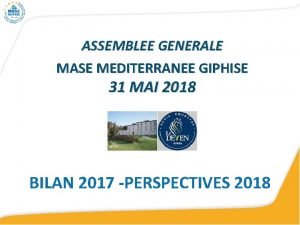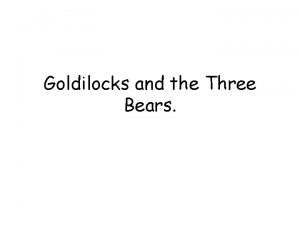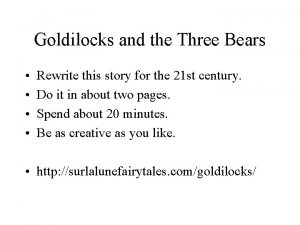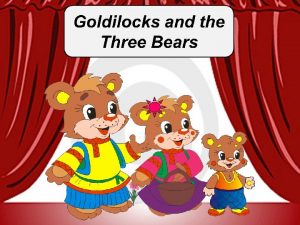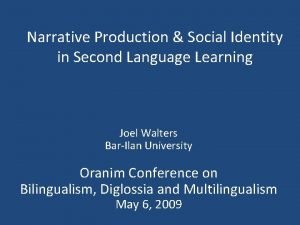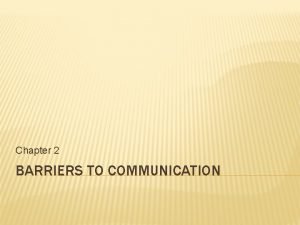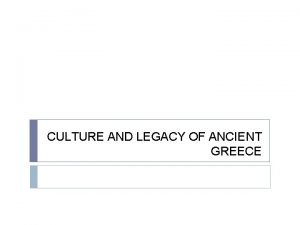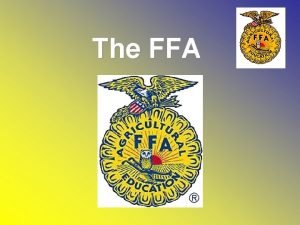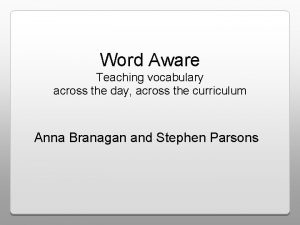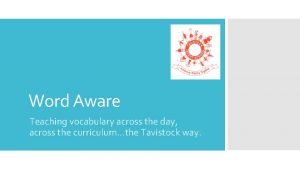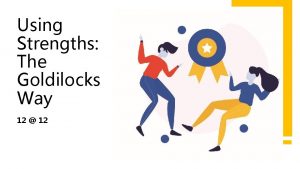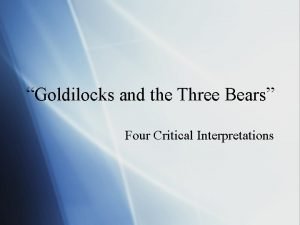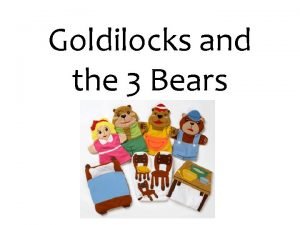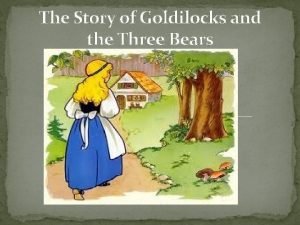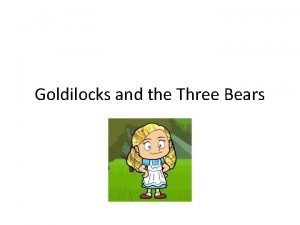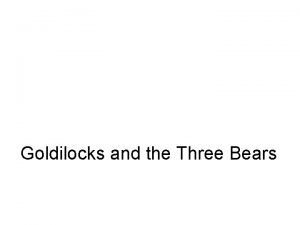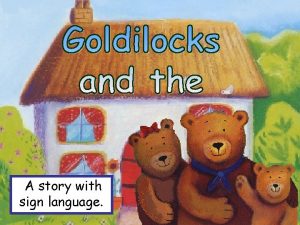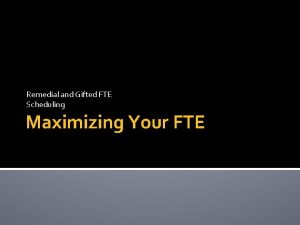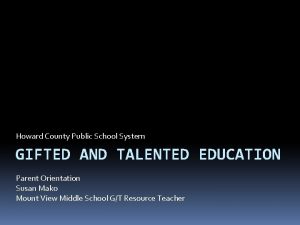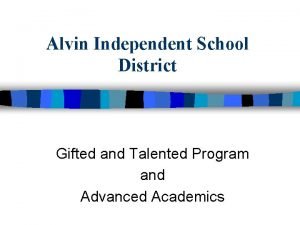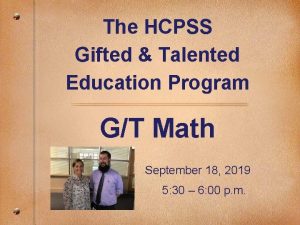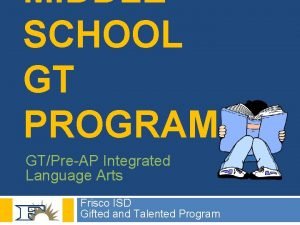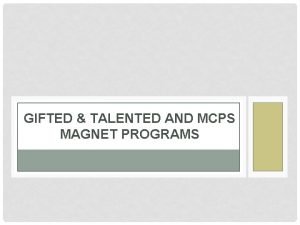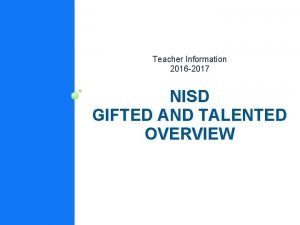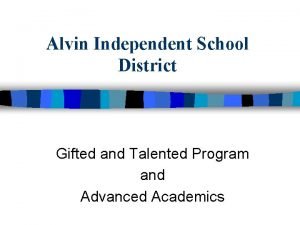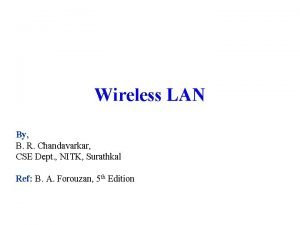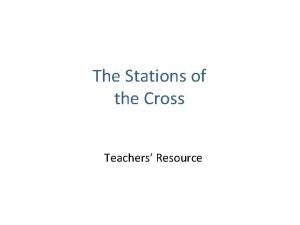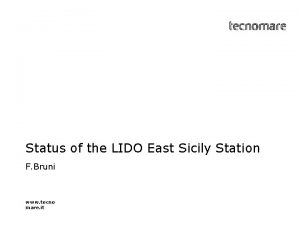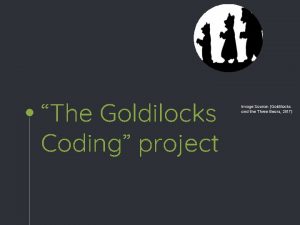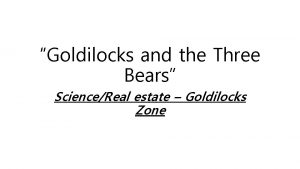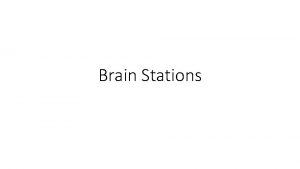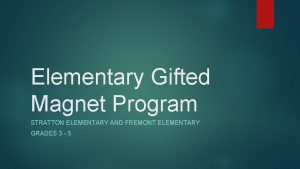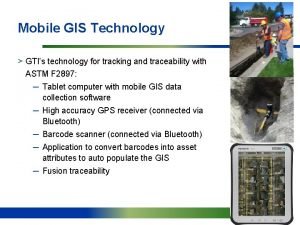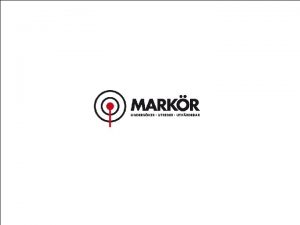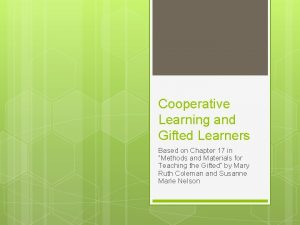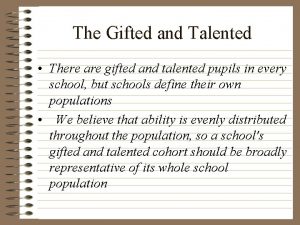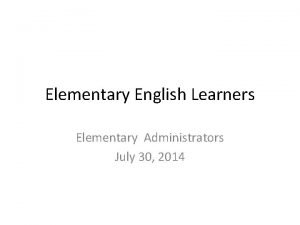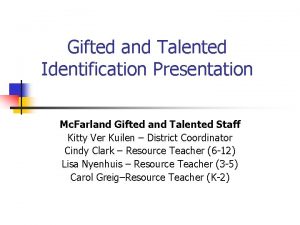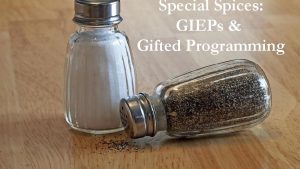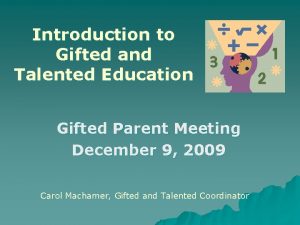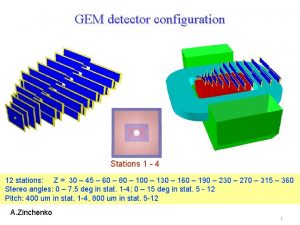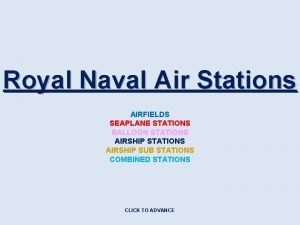Learning Stations and Gifted Learners Elementary GTIs Goldilocks











































- Slides: 43

Learning Stations and Gifted Learners Elementary GTI’s

Goldilocks and Sudoku-Which one is just right?

Tic-Tac-Toe, Checkers, or Chess?

Adding Complexity to Tic-Tac-Toe Make the board larger (4 x 4, 5 x 5) Add a third player: X, O, and Z Add a third dimension Play Tic-Tac-Toe within Tic-Tac-Toe

The Ways You Can setup a differentiated learning station

Simplicity is the key Use what you have already: Colored folders Colored tubs Ziplock bags When using colored folders: Each color represents each group/tier in your classroom

Simplicity Makes it manageable Training your students on the simple color system makes it completely manageable. Have students go to their center and retrieve their colored folder that represents their learning group Be consistent on the management of your differentiated station

Turning in work at a differentiated station

How do you eat an elephant? . . . One bite at a time Start small Get really good at one differentiation station then build up to more stations

Questions, Ideas, and/or suggestions on setup for differentiated stations

Strategies for Differentiation in station work

Depth and Complexity

Elements of Depth and Complexity: http: //www. cvusd. k 12. ca. us/User. Files/Server_117895/File/Parents/Gifted%20 and%20 Talented% ATE)/Depthand. Complexity. Icon. Chart. pdf

Big Idea Task Card # 1 What was the most important event that happened in this story? Explain why you feel this way. Ways to show your learning! 1. You may write or draw and label in your reading journal explaining what the most important event was in the story and give 3 reasons why you feel it was most important. 2. You may illustrate the most important event in the story on drawing paper and write a caption telling why it was important to the story. 3. You may complete a graphic organizer describing what happened before the event and then what happened after the event.

Depth & Complexity Icons Task Card # 1 A character in the book is being written up in the paper 20 years after the novel ends. Write the piece. Where has life taken him/her? Why? Now, do the same for yourself 20 years from now. Make sure both pieces are interesting feature articles. Ways to show your learning! 1. You may write your articles in your reading journal or type them up as a feature article for a Lifestyle section for a newspaper or magazine. Be sure to include a career choice, family life, hobbies, and chosen living location with reasons for these choices. 2. You may design a fake facebook page for your character and yourself. Be sure to include a career choice, family life, hobbies, and chosen living location with reasons for these choices. Here are some links for examples and templates. https: //ncasdtech. wikispaces. com/Facebook+Templates http: //www. teacherstechworkshop. com/2013/08/6 -amazing-facebook-templates-to-use. html

Depth and Complexity Frame using Graphs http: //envisiongifted. com/math. html

Depth and Complexity Frame using Numbers http: //envisiongifted. com/uploads/3/4/4/6/34463750/ways_to_make_a_number. pdf Think like A Mathematician!

Depth and Complexity Frame using A Short Paragraph Think like a U. S. Citizen! Think like a Colonist!

Depth and Complexity Frame -Fill in the blank Imagine you are thinking like a _____ Scientist - Biologist Artist Mathematician Teacher What would you place on this display? Draw 3 objects to place on the display.

Depth and Complexity - Changes over time Create a center by using a tray to place a common object on. Some objects that would work well: Hat Toy car Telephone Toy bicycle Pen Calculator Students will use the object to think about how that object has changed and could change over time. After folding their paper in half, on one side students would draw what the object looked like in the past and on the other half, draw what the object might look like in the future. Students could add labels if able.

Questions, Ideas, and/or suggestions on Depth and Complexity

Cubing

What is Cubing? Cubing is an instructional strategy that asks students to consider a concept from a variety of different perspectives

The ways cubing can look in the differentiated station Great strategy for all students Use different color cubes to help differentiate the levels of cont product, or process Can be easily used in all content subjects

Cubing in terms of Thinking Cubing has students hone in on a variety of thinking skills Each side of the cube could have different levels: Bloom’s Taxonomy Depth of Knowledge (DOK) Levels Un-obvious way to differentiation because all students are working with cubes

You are probably wondering. . . How do students record their responses? Students responses to the cube can be: On a general response sheet In an interactive journal On a customized response sheet

How do I Construct the Cubes? You can buy the cubes Use the cube creator on readwritethink. org Use blank cube boxes or tissue boxes

Steps to Create a Cubing Station Start by deciding which part of your unit lends itself to option 1. Using 1 cube write 6 questions that ask for information on th 2. Use the 1 st cube as your tier 2, create 2 more using one as a higher level. 3. Color code the cubes and decide on the rules.

Questions, Ideas, and/or suggestions on Cubing

R. A. F. T. ●Role ●Audience ●Format ●Topic

What is R. A. F. T. ? R. A. F. T. is an instructional strategy that encourages writing ac areas. It is also an effective way to integrate subject areas. It encourages students to: Assume a role (who or what are you as the writer? ) Consider an audience (to whom are you writing? ) Write in a particular format (what format is effective for you Examine a topic (What are you writing about and why? )

Possible Options: Role: • Writer • Artist • Character • Scientist • Adventurer • Inventor • Juror • Judge • Historian • Reporter • Rebel • Therapist • journalist Audience: • self • peer group • government • parents • fictional character(s) • committee • jury • judge • activists • animals or objects Format: • journal • editorial • brochure • booklet • interview • video • song lyric • cartoon • game • primary document • critique • biographical sketch • newspaper article Topic: • issue relevant to the text or time period • topic of personal interest or concern for the role or audience • topic related to an essential question

To Introduce: Start small! Brainstorm with students ideas for each of the categories (role format, topic) Create anchor charts with ideas that you can throughout the year Model what a quality response looks like Initially, have all students respond to the same RAFT assignmen groups or individually so student’s can see the variety of re As you and students become comfortable with the process, “tweak needed to extend for higher-level thinking.

RAFT Writing Template: Objective: 2. 8 C Classify and sort polygons with 12 or fewer sides according to attributes, including identifying the number of sides and vertices Role: Polygon (Square, Triangle, Pentagon, etc…) Audience: All other polygons Format: Cinquain poem Topic: What makes me unique You are a polygon that we’ve learned about in math class. What makes you unique to other polygons? What are your special characteristics? Where can others find you? What real-life objects are like your shape? Use the format of a cinquain poem to share with other polygons what makes you special. Line 1: Line 2: Line 3: Line 4: Line 5: A one-word title Two words that describe your title Three words that describe an action about your title A four-word phrase that describes a feeling relating toward your title One word that refers back to your title

RAFT Writing Template: Objective: 1. 10 B identify and compare the parts of plants. Role: Roots Audience: Stem, leaf, flower, seeds Format: letter Topic: The role of roots in a plant Pretend you are the roots of a plant. Write a friendly letter to the other parts of your plant explaining your importance. In your letter give three functions of roots. Be sure to include a greeting, body, and closing in your friendly letter. **GT extension: What if roots were on top of the plant instead of at the bottom of the plant? How would that change these functions? Include an illustration with your letter about what this would look like and the effect(s) it would have on the plant.

RAFT Writing Template: Objective: 4. 3 C Determine if two given fractions are equivalent using a variety of methods. Role: fraction Audience: other fractions Format: invitation Topic: How to find your partner(s) (equivalent fractions) at the masquerade ball. . . Pretend you are a fraction. Create a masquerade ball invitation to send to other fractions. In your invitation be sure to tell other fractions how they will know whether or not they are equivalent to you.

RAFT Writing Template: Objective: 5. 21 B Explain how examples of art, music, and literature reflect the times for which they were created. Role: Tour Guide Audience: visitors to your museum Format: brochure Topic: Artifacts reflect the time period they were created. You are a tour guide at the Museum of the American Revolution. Create a brochure for visitors to your museum that highlights two important art pieces, two important music pieces, and two important literature pieces that were created during the time of the American Revolution. Be certain to include an image of each piece, the author (or artist) of each piece, and how the piece reflects the events surrounding the Revolutionary War. **GT extension-as an expert in the discipline in the American Revolution, evaluate which piece in each category is more reflective of its time period and defend your decisions with evidence.

R. A. F. T. assignments can be differentiated in a number of ways: Readiness Level Learning Profile Student Interest

Objective: 1. 10 B identify and compare the parts of plants. Role: Audience: Format: Topic: Plant Parts Plant needs picture We were made for each other! Roots Stem, leaves, flower, seeds letter You’d be lost without me! Flower Stem, leaf, seeds, roots ad I’m more than just a pretty face!

Objective: 5. 21 B Explain how examples of art, music, and literature reflect the times for which they were created. Role: Audience: Format: Topic: Tour Guide Visitors brochure Artifacts reflect the time period they were created. Composer Audience song I tell the story of America’s past. Newspaper Reporter readers Interview Why this piece will go down in history!

Select a unit you’ll be teaching this year: ● Determine the objective(s) you want to reinforce with your students ● Option: Concentrate on Role and Audience, and use RAFT to review people, dates or vocabulary. Then let format and topics be fun and based on interests. ● Option: Concentrate on a skill, and incorporate that skill in either the Format or the Topic. That allows the students to engage by varying the role and audience. – ● Option: Concentrate on the big idea, the understanding, in the Topic. ● Option: allow students to choose from a list of R’s, A’s, F’s and T’s to give them learning style and interest preferences. ● Option: Develop one or two RAFT strips that would lead students to the understanding you selected. ● Option: Leave a blank row and allow students to add their own suggestions for a R. A. F. T. assignment ● Option: Keep one or two columns consistent, allow choice in the other columns

R. A. F. T. Resources: http: //writingfix. com/wac/RAFT. htm Social Studies: http: //writingfix. com/wac/Writing_Across_Curriculum_RAFTS_Soc_St Math: http: //writingfix. com/wac/Writing_Across_Curriculum_RAFTS_M Science: http: //writingfix. com/wac/Writing_Across_Curriculum_RAFTS_Scienc

Questions, Ideas, and/or suggestions on R. A. F. T.
 Gifted education curriculum in the philippines
Gifted education curriculum in the philippines Mase méditerranée
Mase méditerranée Marlin killen
Marlin killen Goldilocks and the three bears chairs
Goldilocks and the three bears chairs Rewriting goldilocks and the three bears
Rewriting goldilocks and the three bears This porridge is just right
This porridge is just right Goldilocks and the three bears
Goldilocks and the three bears Goldilocks and the three bears
Goldilocks and the three bears Conflict of goldilocks and the three bears
Conflict of goldilocks and the three bears Organizational barriers to communication
Organizational barriers to communication Culture and legacy of ancient greece stations
Culture and legacy of ancient greece stations Ffa mission statement
Ffa mission statement Cuadro comparativo e-learning b-learning m-learning
Cuadro comparativo e-learning b-learning m-learning A teacher shall always recognize the almighty god
A teacher shall always recognize the almighty god Active and passive learners
Active and passive learners Word aware goldilocks words
Word aware goldilocks words Word aware display
Word aware display Swot analysis of goldilocks
Swot analysis of goldilocks Goldilocks criticism
Goldilocks criticism Once upon a time goldilocks
Once upon a time goldilocks Once upon a time there was a girl named goldilocks
Once upon a time there was a girl named goldilocks Goldilocks took
Goldilocks took Goldilocks planets
Goldilocks planets Once upon a time goldilocks
Once upon a time goldilocks Mummy bear daddy bear baby bear
Mummy bear daddy bear baby bear Maureen neihart keynote revised profiles of the gifted
Maureen neihart keynote revised profiles of the gifted Gifted and remedial
Gifted and remedial Howard county gifted and talented
Howard county gifted and talented Alvin isd gifted and talented
Alvin isd gifted and talented Hcpss 4th grade math
Hcpss 4th grade math Frisco gifted program preparation
Frisco gifted program preparation Howard county gifted and talented
Howard county gifted and talented Mcps gifted and talented
Mcps gifted and talented The anderson school gifted and talented nyc
The anderson school gifted and talented nyc Nisd gifted and talented program
Nisd gifted and talented program Alvin isd gifted and talented
Alvin isd gifted and talented Ten thousand airline reservation stations are competing for
Ten thousand airline reservation stations are competing for Weather symbols station model
Weather symbols station model The way of the cross 14 stations
The way of the cross 14 stations Stations of the cross for teachers
Stations of the cross for teachers What wind is forecast for stl at 12 000 feet
What wind is forecast for stl at 12 000 feet _is the very important function in the radio telex system.
_is the very important function in the radio telex system. Stations design sicily
Stations design sicily Stations of the cross we adore you
Stations of the cross we adore you

